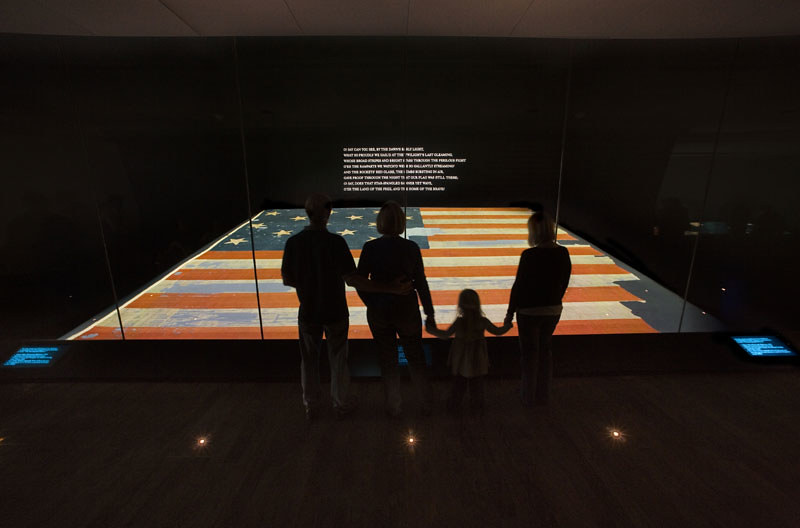It’s Flag Day here in the US, so it’s a good time to tell the story of one American flag that led to the writing of what is now our national anthem.
If you know the words to “The Star-Spangled Banner,” you know part of the story.
During the war of 1812, an American prisoner in British custody, Francis Scott Key, watched a ferocious battle at Fort McHenry in Baltimore.
He feared the invaders would burn the fort and the whole city down.
When he saw that the garrison flag was still flying, he was so inspired (or maybe relieved) that he wrote a poem about it.
The author of a book about the song notes that the original name of the poem was “Defence of Fort M’Henry.”
He says Key’s poem was partly a salute to the country and its ability to hang on even through the perilous fight, and partly a protest of the leaders who had left that country poorly defended.
Over time the song became a tribute to the country as a whole and the flag as a symbol of that country, but Key was writing about the specific flag that flew over Fort McHenry.
That flag had been sewn by a team led by Mary Pickersgill.
She made a lot of the flags for ships that sailed in and out of Baltimore.
This order took seven weeks to fulfill, since the flag was 30 feet high by 42 feet long.
And it was made during that short period of time when the flag had fifteen stripes as well as fifteen stars; the US went back to thirteen stripes in 1818.
After the battle, the flag was given to Fort McHenry’s commander, Lieutenant Colonel George Armistead.
His family held onto the banner for almost a century, and put it out for display from time to time.
Along the way souvenir hunters helped themselves to little pieces of the giant flag, which made it shorter and shorter.
Armistead’s descendants put the flag in a safe deposit box in New York and eventually gave it to the Smithsonian.
They asked that it always be on public view, but keeping a centuries old flag out and about can lead to fading and more deterioration.
For a time in the 1980s, the National Museum of American History allowed visitors to see the flag for just one minute out of every half hour.
After that, a special cover would drop down to protect it.
These days, it’s kept on display in very low light, and I’m pretty sure that the staff checks the case every morning, as the song goes, that the flag was still there.
In 2017, the community of Pocatello, Idaho raised a new flag for the first time – to widespread relief.
The old flag had been named the ugliest in the country!
The design, which had been meant as a logo, not a flag, was white with a pair of purple mountains and the phrase “Proud to be Pocatello” in two different colors and fonts.
Nobody was really flying the flag for that flag, I guess.
The Star-Spangled Banner (National Museum of American History)
East Idaho City Ditches ‘Worst Flag In North America’ (Boise State Public Radio)
Fly the flag for this show as a backer on Patreon
Photo by National Museum of American History via Flickr/Creative Commons

